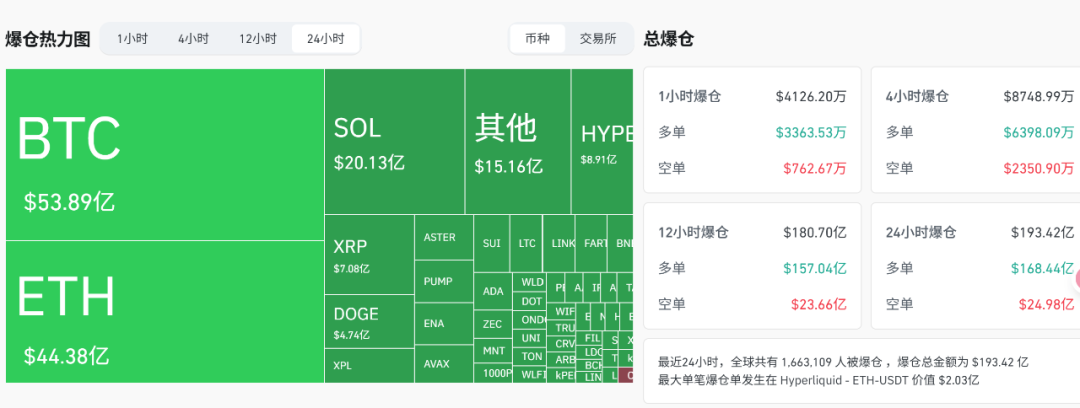On October 10, 2025, the cryptocurrency market ushered in an epic deleveraging storm.
When enthusiastic long traders were forced to face the iron laws of the market, more than $20 billion in leveraged positions were liquidated within an hour, Bitcoin plummeted 15% in a single day, the liquidity of altcoins was almost exhausted, and even veteran players were caught off guard by the bloody market.
The massacre was triggered by multiple negative factors at the macro level: escalating trade tensions triggered panic selling of risky assets.
Bitcoin plummeted 13% in an hour, with altcoins experiencing even more severe slippage. Tokens like ATOM briefly traded near zero on illiquid exchanges, recovering some of the losses later but leaving the market severely damaged.
The total liquidation amount of centralized and decentralized platforms in the entire market exceeded US$20 billion, setting a record for the largest single-day liquidation in the history of cryptocurrency.

This was no mild decline – weeks of accumulated bullish sentiment and high open interest evaporated overnight, with $65 billion in open interest wiped out of the system, and the market structure returned directly to the level of several months ago.
On the surface, this appears to be a "retail investor rout," but Scott Melker of "The Wolf of Wall Street" and several analysts point to the truth: "The victims weren't retail investors, but crypto-native traders using leverage on decentralized exchanges. This was a leverage purge of the most steadfast holders."
Data confirms that new entrants are primarily allocated to spot ETFs or mainstream assets, avoiding the impact of DeFi's leverage mechanism. The hardest hit are those who trade highly leveraged perpetual contracts, primarily crypto veterans, not newcomers.
According to Bitwise fund manager Jonathan's review, the root cause lies in the defects in the market structure. Perpetual contracts are a zero-sum game, and when the solvency of the losing party collapses, it triggers systemic risks.
The surge in volatility caused liquidity providers to withdraw, the weak order book of altcoins caused a price collapse, and the automatic deleveraging mechanism even accidentally hit profitable positions.
Platforms like Hyperliquid profited from on-chain liquidity pools, acquiring assets at a discount during forced liquidations. By market close, even sophisticated market-neutral strategies were disrupted by operational delays and collateral liquidation issues.
Centralized exchanges, especially long-tail tokens, have become the hardest hit areas, while DeFi has demonstrated resilience thanks to its strict collateral standards and hard-coded price mechanisms.
For example, protocols like Aave require high-quality collateral to avoid a death spiral caused by a decoupling of stablecoin prices. However, pain points remain: USDe fell to $0.65 on some exchanges, and related margin positions evaporated instantly.
The price difference of up to $300 between exchanges creates opportunities for arbitrageurs, but what is more alarming is that while $20 billion evaporated, spot buying remained stable.
As prices rebounded from extremes, excess leverage in the market was forced to liquidate. As Jonathan noted, the key to survival lies not only in strategic judgment but also in operational capabilities and the art of liquidity management.
Hunter Horsley, CEO of Bitwise, commented: "The largest one-day drop in Bitcoin's history, a mere 15%, demonstrates its inherent strength. This train is unstoppable."
The increasing correlation between cryptocurrencies and the macro environment means that such deleveraging is both an inevitable market regulation mechanism and a necessary pain in rebuilding a healthy ecosystem.
When the cruelty of leverage becomes apparent, every participant must remember: risk control is always more important than profit pursuit.







